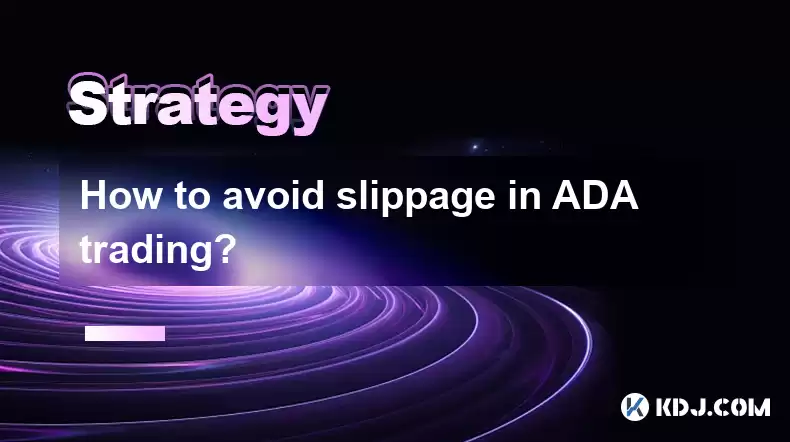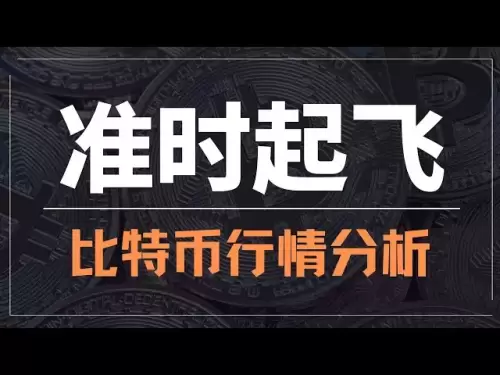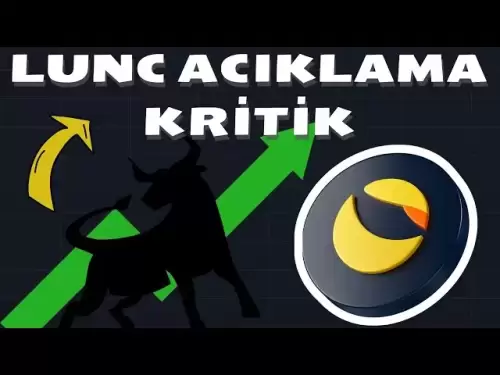-
 Bitcoin
Bitcoin $117300
1.93% -
 Ethereum
Ethereum $3866
5.21% -
 XRP
XRP $3.109
3.81% -
 Tether USDt
Tether USDt $1.000
0.01% -
 BNB
BNB $781.5
1.52% -
 Solana
Solana $173.0
2.95% -
 USDC
USDC $0.9998
0.00% -
 Dogecoin
Dogecoin $0.2181
6.31% -
 TRON
TRON $0.3403
0.93% -
 Cardano
Cardano $0.7683
3.91% -
 Hyperliquid
Hyperliquid $40.08
5.09% -
 Sui
Sui $3.742
7.38% -
 Stellar
Stellar $0.4152
4.69% -
 Chainlink
Chainlink $18.40
10.03% -
 Bitcoin Cash
Bitcoin Cash $580.6
2.21% -
 Hedera
Hedera $0.2543
4.25% -
 Ethena USDe
Ethena USDe $1.001
-0.01% -
 Avalanche
Avalanche $22.94
3.52% -
 Litecoin
Litecoin $121.8
2.24% -
 UNUS SED LEO
UNUS SED LEO $8.955
-0.41% -
 Toncoin
Toncoin $3.330
3.03% -
 Shiba Inu
Shiba Inu $0.00001270
2.97% -
 Uniswap
Uniswap $10.34
6.42% -
 Polkadot
Polkadot $3.805
3.86% -
 Dai
Dai $1.000
0.01% -
 Bitget Token
Bitget Token $4.429
1.80% -
 Cronos
Cronos $0.1495
4.65% -
 Monero
Monero $255.6
-9.08% -
 Pepe
Pepe $0.00001096
4.40% -
 Aave
Aave $282.9
7.85%
How to avoid slippage in ADA trading?
Slippage in ADA trading occurs due to market volatility, low liquidity, and order execution delays; use limit orders and trade during high liquidity to minimize it.
Apr 18, 2025 at 11:56 pm

Understanding Slippage in ADA Trading
Slippage is a common phenomenon in cryptocurrency trading, including when trading Cardano (ADA). It refers to the difference between the expected price of a trade and the price at which the trade is actually executed. Slippage can occur due to market volatility, low liquidity, or delays in order execution. In the context of ADA trading, understanding and minimizing slippage is crucial for traders aiming to optimize their trading strategies and improve their overall performance.
Factors Contributing to Slippage in ADA Trading
Several factors can contribute to slippage when trading ADA. Market volatility is a primary driver; rapid price movements can cause the price at which your order is filled to differ from the price you expected. Liquidity is another significant factor; if there are not enough buyers or sellers at your desired price point, your order may be filled at a less favorable price. Additionally, order size can impact slippage; larger orders are more likely to move the market, leading to higher slippage. Trading platform efficiency also plays a role; delays in order processing can result in trades being executed at different prices than anticipated.
Strategies to Minimize Slippage in ADA Trading
To minimize slippage when trading ADA, traders can adopt several strategies. One approach is to use limit orders instead of market orders. A limit order allows you to specify the price at which you are willing to buy or sell ADA, helping to control the execution price. Another strategy is to trade during high liquidity periods, such as when major markets are open, to reduce the impact of large orders on the market. Additionally, monitoring market depth can provide insights into the available liquidity at different price levels, allowing for more informed trading decisions.
Implementing Limit Orders to Reduce Slippage
Using limit orders is one of the most effective ways to minimize slippage in ADA trading. Here’s how to implement a limit order on a typical trading platform:
- Log into your trading account and navigate to the ADA trading pair.
- Select the order type as "Limit Order."
- Enter the price at which you want to buy or sell ADA. For a buy order, this should be the highest price you are willing to pay; for a sell order, it should be the lowest price you are willing to accept.
- Specify the amount of ADA you want to trade.
- Review and submit the order. The order will be added to the order book and will be executed only if the market reaches your specified price.
By using limit orders, you can better control the execution price of your trades, thereby reducing the potential for slippage.
Trading During High Liquidity Periods
Trading ADA during periods of high liquidity can significantly reduce slippage. High liquidity periods typically occur when major cryptocurrency markets, such as those in the United States or Europe, are open. During these times, there are more active buyers and sellers, which can help ensure that your orders are filled at prices closer to your expectations.
To identify high liquidity periods for ADA trading:
- Monitor trading volumes on major exchanges. Higher volumes generally indicate higher liquidity.
- Use market analysis tools to track when trading volumes are typically highest for ADA.
- Align your trading activities with these high-volume periods to take advantage of the increased liquidity and reduce the likelihood of slippage.
Monitoring Market Depth for Informed Trading
Market depth, or the order book, provides valuable information about the liquidity available at different price levels. By monitoring market depth, traders can make more informed decisions about when and at what price to execute their trades, helping to minimize slippage.
To effectively monitor market depth for ADA trading:
- Access the order book on your trading platform. This will show you the current buy and sell orders at different price levels.
- Analyze the order book to identify areas of high liquidity. Look for price levels with a large number of orders, as these indicate where the market is most likely to execute trades without significant slippage.
- Adjust your trading strategy based on the information from the order book. For instance, if you see a high concentration of buy orders at a particular price, you might set your limit order just below that level to increase the chances of execution.
By understanding and utilizing market depth data, traders can better navigate the complexities of ADA trading and reduce the impact of slippage on their trades.
Using Slippage Tolerance Settings
Some trading platforms offer slippage tolerance settings that allow traders to specify the maximum amount of slippage they are willing to accept. This feature can be particularly useful for traders who prefer to use market orders but still want to manage slippage.
To use slippage tolerance settings when trading ADA:
- Access the settings on your trading platform and look for options related to slippage tolerance or maximum slippage.
- Set your desired slippage tolerance. This could be a percentage or a fixed amount, depending on the platform's settings.
- Place your market order with the slippage tolerance in place. If the market moves beyond your specified tolerance, the order will not be executed, helping to protect you from excessive slippage.
By utilizing slippage tolerance settings, traders can balance the speed of market orders with the control offered by limit orders, further reducing the risk of slippage in ADA trading.
Frequently Asked Questions
Q: Can slippage be completely eliminated in ADA trading?
A: While it is not possible to completely eliminate slippage due to the inherent volatility and liquidity dynamics of cryptocurrency markets, traders can significantly reduce its impact by using the strategies outlined above, such as limit orders, trading during high liquidity periods, and monitoring market depth.
Q: How does the size of my ADA trade affect slippage?
A: The size of your ADA trade can significantly impact slippage. Larger orders are more likely to move the market, leading to higher slippage. To minimize this effect, consider breaking up large orders into smaller, more manageable trades that are less likely to impact the market price.
Q: Are there any tools or indicators that can help predict slippage in ADA trading?
A: While there are no specific tools or indicators designed solely to predict slippage, traders can use market analysis tools, such as volume indicators and order book data, to gauge market liquidity and volatility, which can help in anticipating potential slippage. Additionally, some trading platforms offer real-time slippage estimates that can be useful for planning trades.
Q: How does the choice of trading platform affect slippage in ADA trading?
A: The choice of trading platform can significantly impact slippage due to differences in order execution speed, liquidity, and available features. Platforms with faster execution times and higher liquidity tend to experience less slippage. Additionally, platforms that offer advanced order types and slippage management tools can help traders better control their trades and minimize slippage.
Disclaimer:info@kdj.com
The information provided is not trading advice. kdj.com does not assume any responsibility for any investments made based on the information provided in this article. Cryptocurrencies are highly volatile and it is highly recommended that you invest with caution after thorough research!
If you believe that the content used on this website infringes your copyright, please contact us immediately (info@kdj.com) and we will delete it promptly.
- Bitcoin Reserve, Gold Revaluation, Congress Considers: A New Era for US Financial Strategy?
- 2025-08-08 04:30:12
- KAITO's Momentum: Can It Reclaim Support Amidst Social Media Scrutiny?
- 2025-08-08 04:30:12
- Pi Coin's dApp and AI Potential: Building a Decentralized Future
- 2025-08-08 02:30:12
- Ruvi AI Takes the Lead: Outshining Dogecoin on CoinMarketCap
- 2025-08-08 02:50:12
- Cryptos Under $1: Is Ripple Still the King?
- 2025-08-08 03:50:12
- Cold Wallet, Bonk Price, ICP Price: Navigating the Crypto Landscape in 2025
- 2025-08-08 03:56:12
Related knowledge

How to avoid common crypto investment mistakes?
Jul 13,2025 at 01:35am
Understanding the Risks of Crypto InvestmentInvesting in cryptocurrency can be highly rewarding, but it also comes with significant risks. One of the ...

What is a long-short crypto strategy?
Jul 15,2025 at 10:56am
Understanding the Basics of a Long-Short Crypto StrategyA long-short crypto strategy is an investment approach where traders simultaneously take long ...

What is a long-short crypto strategy?
Jul 11,2025 at 01:28pm
Understanding the Basics of Long-Short Crypto StrategyA long-short crypto strategy is an investment approach where traders take both long and short po...

How to use the RSI indicator for crypto?
Jul 12,2025 at 03:56pm
Understanding the RSI Indicator in Cryptocurrency TradingThe Relative Strength Index (RSI) is a momentum oscillator used to measure the speed and chan...

Is copy trading a good strategy for crypto beginners?
Jul 12,2025 at 08:28am
Understanding Copy Trading in the Cryptocurrency MarketCopy trading is a strategy where novice traders replicate the trades of experienced investors a...

How to build a crypto portfolio with $1000?
Jul 13,2025 at 08:14pm
Understanding the Basics of Cryptocurrency InvestmentBuilding a crypto portfolio with $1000 starts with understanding the fundamentals of cryptocurren...

How to avoid common crypto investment mistakes?
Jul 13,2025 at 01:35am
Understanding the Risks of Crypto InvestmentInvesting in cryptocurrency can be highly rewarding, but it also comes with significant risks. One of the ...

What is a long-short crypto strategy?
Jul 15,2025 at 10:56am
Understanding the Basics of a Long-Short Crypto StrategyA long-short crypto strategy is an investment approach where traders simultaneously take long ...

What is a long-short crypto strategy?
Jul 11,2025 at 01:28pm
Understanding the Basics of Long-Short Crypto StrategyA long-short crypto strategy is an investment approach where traders take both long and short po...

How to use the RSI indicator for crypto?
Jul 12,2025 at 03:56pm
Understanding the RSI Indicator in Cryptocurrency TradingThe Relative Strength Index (RSI) is a momentum oscillator used to measure the speed and chan...

Is copy trading a good strategy for crypto beginners?
Jul 12,2025 at 08:28am
Understanding Copy Trading in the Cryptocurrency MarketCopy trading is a strategy where novice traders replicate the trades of experienced investors a...

How to build a crypto portfolio with $1000?
Jul 13,2025 at 08:14pm
Understanding the Basics of Cryptocurrency InvestmentBuilding a crypto portfolio with $1000 starts with understanding the fundamentals of cryptocurren...
See all articles

























































































